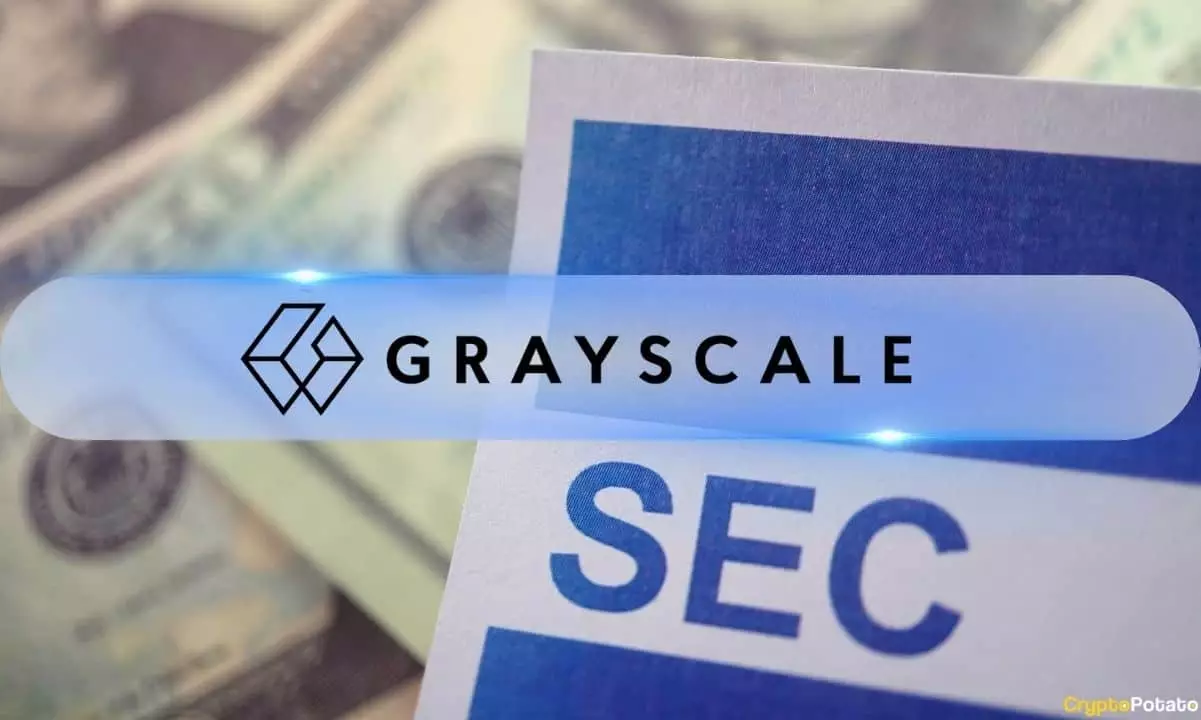Grayscale Investments is once again at the forefront of cryptocurrency innovation as it seeks to transform its Digital Large Cap Fund (GDLC) into an exchange-traded fund (ETF). This strategically significant shift appears to echo a broader trend among financial institutions, signaling a burgeoning acceptance of cryptocurrencies within traditional investment frameworks. Currently, the GDLC boasts over $524 million in assets, predominantly comprising Bitcoin (BTC) at 75% and Ethereum (ETH) at 19%, with the remainder allocated among Solana (SOL), Avalanche (AVAX), and XRP. The move to convert this fund into an ETF reflects Grayscale’s ongoing commitment to enhance accessibility to digital assets for a wider array of investors.
This initiative is taking place against a backdrop of increased activity within the cryptocurrency ETF market. Recently, the SEC has been scrutinizing a wave of new ETF applications. Specifically, Grayscale’s recent success in converting its Bitcoin and Ethereum funds into ETFs has set a critical precedent. These transformations not only legitimize cryptocurrencies as viable investment vehicles but also pave the way for further financial instruments linked to digital assets. The anticipated listing of a potential Grayscale ETF on the New York Stock Exchange (NYSE) could significantly impact market dynamics, driving both institutional and retail investment.
The competitive landscape for cryptocurrency ETFs is heating up as other firms, including Bitwise and Canary Capital, have also submitted applications for their own spot XRP ETFs. The intent behind these applications is clear: to create financial products that accurately reflect the value of XRP by utilizing the Chicago Mercantile Exchange’s CF Ripple index. In addition to XRP, Canary Capital is pursuing a spot Litecoin ETF, which aims to incorporate Litecoin (LTC) while relying on the CoinDesk Litecoin Price Index for determining its asset value. The ongoing developments in this arena point toward a vibrant and increasingly competitive ecosystem of cryptocurrency ETFs.
Despite the legal wranglings surrounding XRP, which are ongoing as Ripple continues its battle with the SEC, optimism lingers in the industry. Ripple’s CEO, Brad Garlinghouse, has expressed strong belief in the eventual approval of an XRP ETF, further fostering confidence among investors. Interestingly, Canary Capital’s statements about Litecoin’s institutional potential reflect a growing recognition of the maturity of this asset class. The venture capital firm recently articulated its positive outlook on the regulatory landscape, suggesting that a shift towards a more accommodating regulatory environment could be on the horizon.
As Grayscale leads the charge in converting its mixed-crypto fund into an ETF, the resulting impact on the cryptocurrency market could be significant. By addressing regulatory hurdles and adapting to investor demands, these ETFs represent a crucial intersection between traditional finance and the burgeoning world of digital assets. Moreover, as more firms step into this space, they not only contribute to the legitimacy of cryptocurrencies but also enhance the diversity of investment options available to the public. The future of cryptocurrency ETFs appears promising, and as regulations evolve, the market may witness an influx of innovative financial products designed to harness the potential of digital assets.















